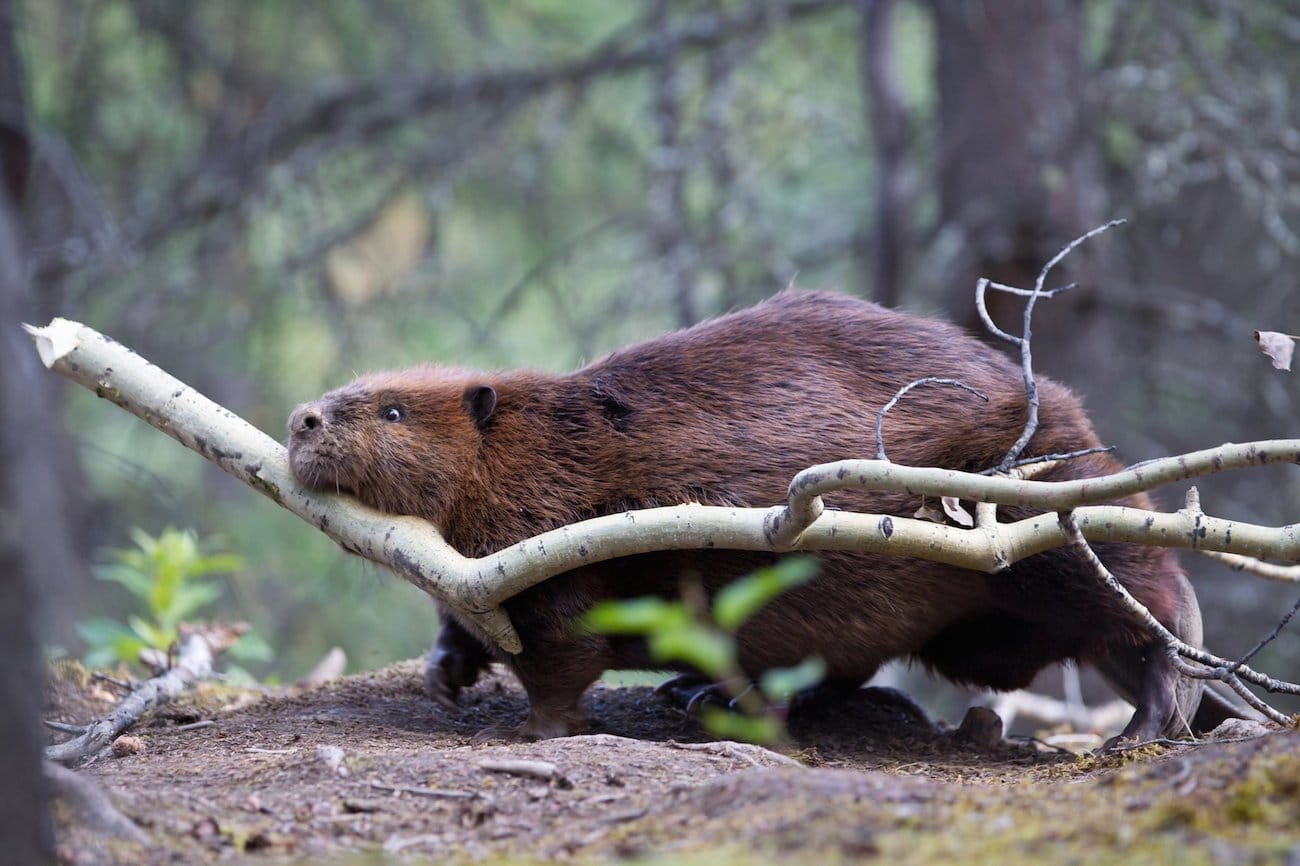Leave It to Beavers - The Atlantic

Quoting the authors below, “In the 1600s, as many as 400-million beavers were waddling about the continent. Just 6-million to 12-million remain today. You have to imagine that there was a beaver dam every half mile, on every stream, in every single watershed in North America.”
Given that on most Texas ranches the largest category of landowner expenses is water development to address water shortage, it is remarkable that Texas wildlife managers give almost no thought to the continent’s greatest ecological engineers’ possible role in restoring degraded habitats and watersheds.
NOTE: this article initially appeared on TheAtlantic.com in June 2012. It was written by David Ferry.
IN THE 1820S, one of the largest corporations on Earth tried to kill every beaver in the Pacific Northwest.
Britain’s Hudson’s Bay Company, threatened by the United States’ westward expansion, sent trappers sweeping down the Columbia River watershed to exterminate all the beavers they found and harvest their valuable pelts. Without beavers to hunt, the company’s governor reasoned, the United States would have “no inducement to proceed hither.” Within 20 years, the beaver was nearly eradicated from an area the size of France.
Now, nearly two centuries later, beavers are valued not just for their pelts, but for the environmental benefits of their gnawing and nesting. A growing community of “beaver believers” is reintroducing the animal to regional water systems throughout the American West in the hopes of reducing the incidence of floods and the damage from forest fires, alleviating drought, helping fish thrive, and conserving fresh water—in the process, helping to combat some of the effects of climate change.
In the 1600s, as many as 400 million beavers were waddling about the continent. Just 6 million to 12 million remain today. “You have to imagine that there was a beaver dam every half mile, on every stream, in every single watershed in North America,” says Amanda Parrish, who manages the watershed program for the Lands Council, a nonprofit based in Spokane, Washington.
Conservationists have been working to restore the population since as early as 1928, when Grey Owl (né Archibald Belaney), the original beaver believer, established his first colony with two baby beavers he found in the backwoods of Canada. In the 1940s, Idaho’s Department of Fish and Game embarked on an effort both larger in scale and kookier in method. Finding long, dusty overland trips too hard on the beavers, the department instead packed pairs of the animals into crates, loaded them onto airplanes bound for drought-stricken corners of the state, and dropped them by parachute. (The crates were rigged to open on impact.) The endeavor was apparently a success: a 1950 report notes that of the 76 beavers airdropped in the fall of 1948, only one fell to its death; the others began building dams and homes and founding colonies, which can grow as large as a dozen or so beavers.
Idaho’s strategy has since been validated by dozens of scientific studies illustrating the vital role beavers play in ecosystems. Their dams create ponds and wetlands that retain rainwater and snowmelt, and while beaver ponds themselves are shallow little affairs, research has shown that they help preserve groundwater, allowing vegetation and trees to flourish and increasing biodiversity. According to one study, the amount of fresh water a single colony adds to a local ecosystem each day is the equivalent of at least a once-in-200-years flood event.
To see a beaver today, I drove some 30 miles from Oakland, where I live, to suburban Martinez, California, where a beaver family has moved into the creek that cuts through town. There, a delightful beaver-believer couple showed me around the colony, pointing out the subtleties of beaver construction and anatomy, as a pair of yearlings swam below us.
The beaver evolved to live in and out of water, and the result feels a bit schizophrenic. Your standard beaver comes with webbed hind feet and a scaly, flat tail (perfect for maneuvering underwater and for balancing on land), as well as grasping paws and a pair of buckteeth. It is further equipped with nose valves that close underwater and eye membranes that act as swim goggles. Adult beavers weigh about 40 pounds and are appealing in the way squirrels are: they’re cute, but they’re still rodents. From a historical perspective, the beaver’s most fateful feature is its coat, a combination of thick underfur and longer guard hair that allows the animal to thrive in widely varying climes. It is rugged enough to let the beavers of northern Canada linger beneath the surface of frozen ponds, but light enough to help keep the animal cool during hot New Mexico summers. Unfortunately for beavers, these qualities also make for very fine hats.
Eastern Washington, where Amanda Parrish and her team are implementing their “Beaver Solution,” is today home to about 50,000 beavers, compared with a onetime high of perhaps 5 million. Because of rising temperatures, the snowpack is melting earlier and earlier in springtime, causing trillions of gallons of fresh water to gush down from the mountains, overwhelming streams and sluicing over the ground too fast to nourish the ecosystem.
Repopulating such a large region with beavers is exceptionally complex. The dense forests that beavers once inhabited no longer cover the range, so reintroduced families have limited options for homes. And beavers, being wild animals, don’t always stay put. But each new family integrated into the ecosystem makes the job easier, stemming the loss of fresh water and creating habitat suitable for more beavers. So far, Parrish and her team have moved 45 beavers into the area. Their thinking is simple, and especially compelling as the Earth warms and droughts become more prevalent: where there are beavers, there is water.
